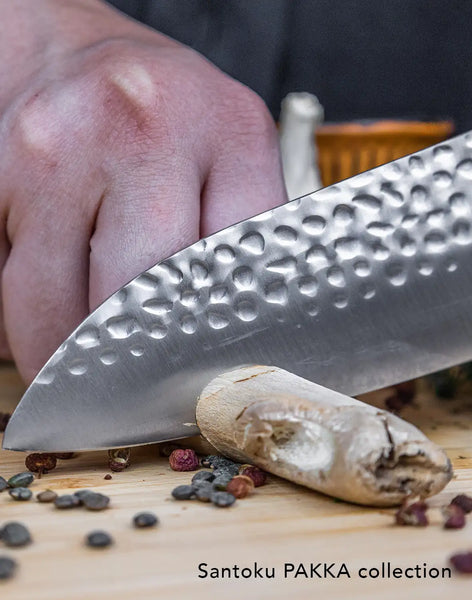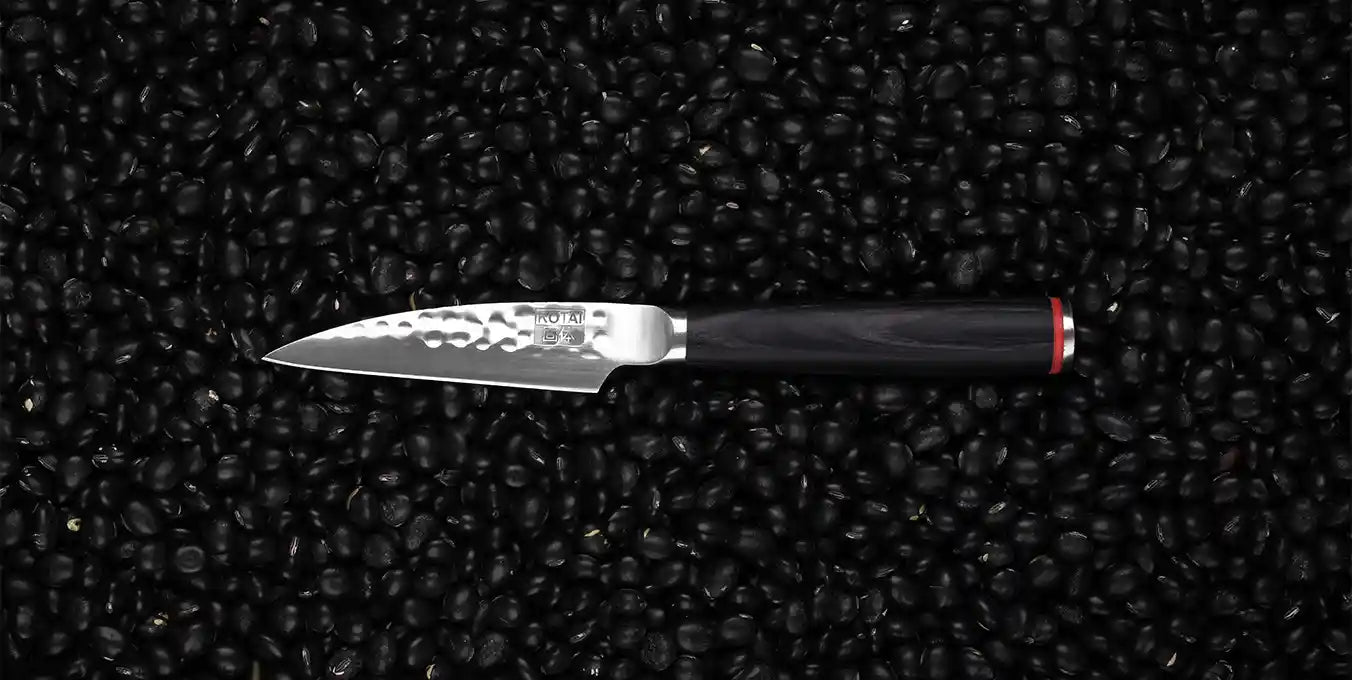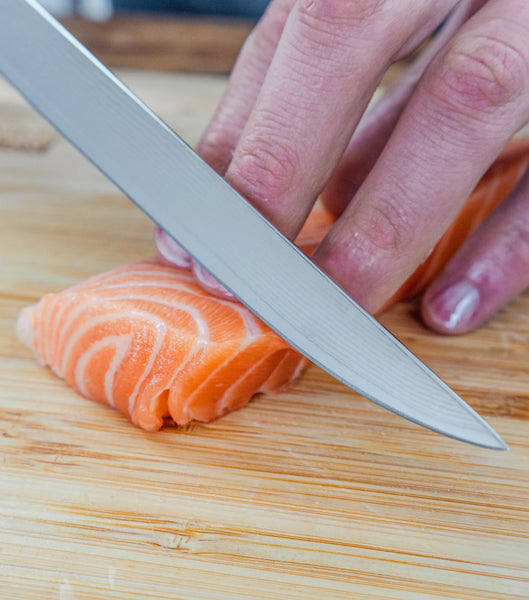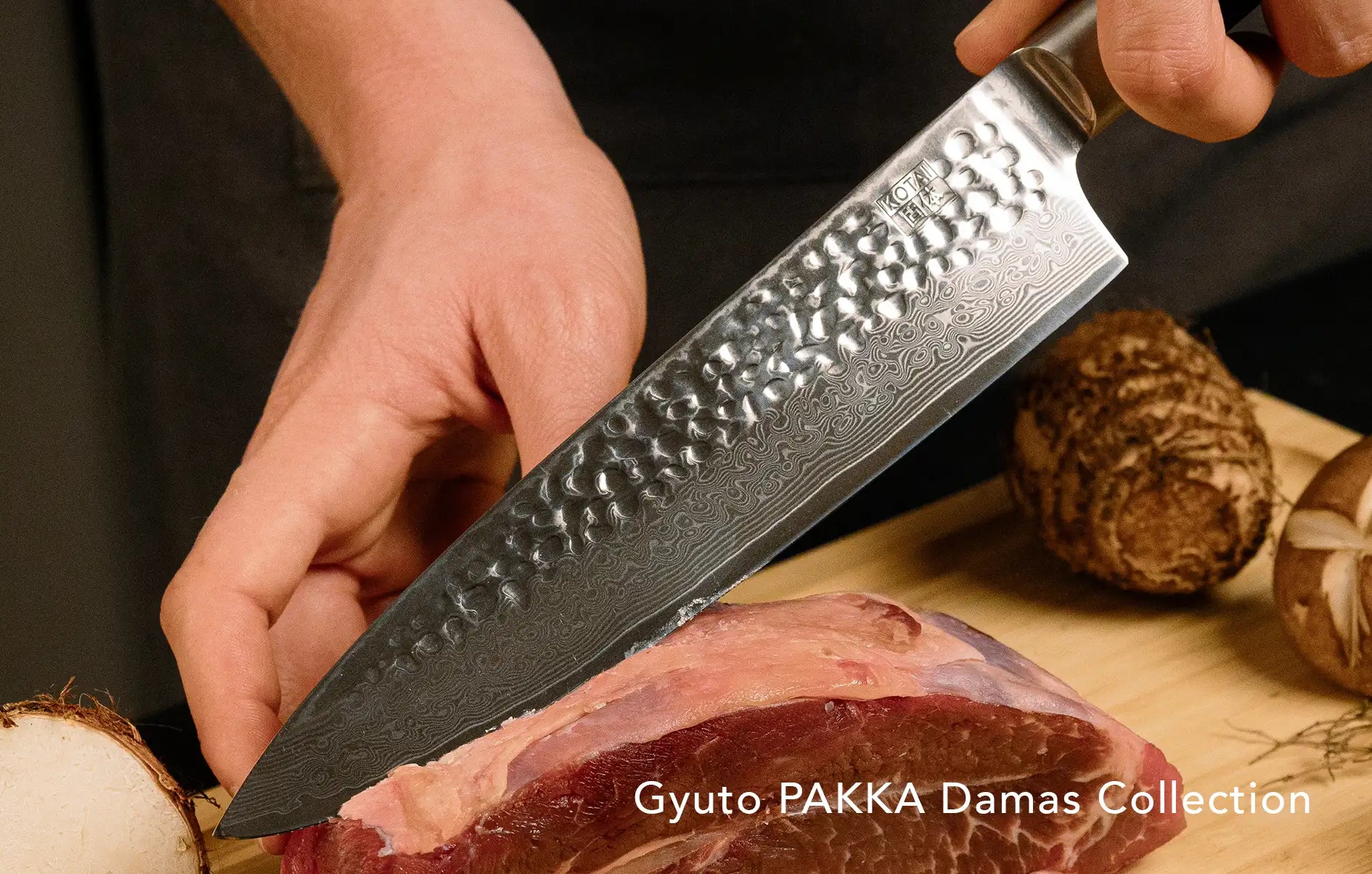Many handmade Japanese knives are hammered, but where does this tradition come from? What are its functions, and why is it so highly valued?
The tsuchime hammering technique is traditionally used in Japan for high-end kitchen knives. At KOTAI, we have chosen to employ this technique in the production of our Japanese blades dedicated to cooking amateurs as well as professionals.
But why? Does Tsuchime hammering really serve a purpose? What sets it apart from other Japanese kitchen knife manufacturing methods? These are the questions we will explore in this article. But first, we would like to retrace the history of hammering.
The Origins of Tsuchime Hammering
The Japanese characters tsuchi-me (槌目) literally mean "hammer marks," referring to the visible traces left by this technique on the finished product. The hammering of kitchen knife blades dates back several centuries, and originates in traditional Japanese forging methods. Whether on kitchen knives or katana blades, its primary purpose was to remove defects and impurities from the steel, making the blade stronger and more durable.
Tsuchime was also practiced on the guard of certain swords. Since the Edo period (1600-1868), more sophisticated alloys of copper and gold have enabled the engraving of more varied and complex patterns. This marked the first use of the tsuchime technique for mainly aesthetic purposes. Hammering tools diversified during this time, and chisels became widely used for more precise work.
As for our field, knife artisans find that this technique offers benefits beyond its purely structural function. The irregularities created by Tsuchime hammering form small air pockets on the blade’s surface, which reduces friction with food. This allows ingredients to glide more easily along the blade without sticking, minimizing adhesion and making cutting and cleaning easier.
Moreover, tsuchime hammering gives knives a distinct aesthetic, providing them with a unique visual texture and character through patterns that stand out from smooth, uniform blades. As a result, tsuchime has become popular in the production of high-end kitchen knives, symbolizing both craftsmanship and quality.
This mark of expertise explains why, today, tsuchime hammering is not only used on kitchen tools like knives but also on precious items such as wedding rings.
Tsuchime and Other Finishing Techniques
Hammered kitchen knife blades come in various distinct styles, each giving the blade unique properties and appearance. Tsuchime hammering, for example, is characterized by small, uniform hammer marks that resemble raindrops. These marks create tiny air pockets on the blade, which prevent moist foods like vegetables from sticking to the knife during cutting and also reduce the adhesion of meat to the blade.
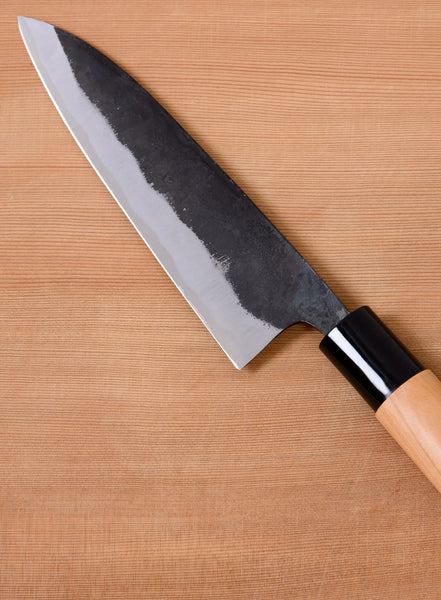
Kurouchi 黒打ち
The Kurouchi blade is forged and left unpolished. Its deep black upper layer (kuro meaning “black” in Japanese) is created through the oxidation of the steel when heated to extremely high temperatures during the forging process. It protects the knife from corrosion and gives it excellent non-stick qualities. Additionally, its raw appearance is highly appreciated by some Japanese knife enthusiasts.
However, a Kurouchi knife evolves over time, and its color gradually fades with the passing years.
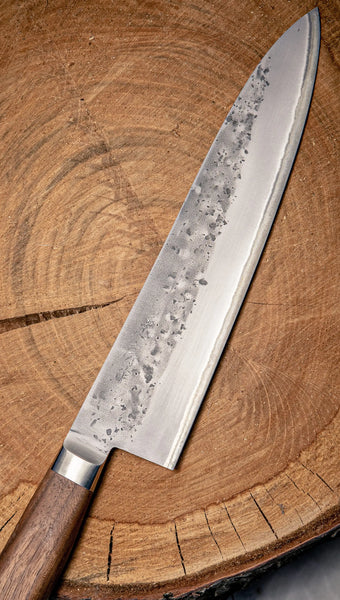
Nashiji 梨地
The Nashiji knife has been polished just enough to remove the top layer of steel that gives the Kurouchi knife its black hue. This polishing results in a matte finish, iconic in traditional Japanese knives. The hammering irregularities on the blade also provide an anti-stick effect, although less pronounced. Its name comes from the rough texture of the blade's surface, which resembles the skin of Japanese nashi pears.
However, this roughness can have long-term drawbacks, as moisture can more easily settle in the surface. Care must be taken when wiping a Nashiji knife to prevent rust from forming!
Tsuchime at Kotai
At Kotai, we offer a variety of hammered knives to enhance cutting comfort and provide a more attractive design. From the Pakka paring knife to the Santoku knife in the Bunka collection, most of our knives are hammered using a block of tungsten, a very hard metal that allows for the hammering of blades made of a softer steel.
Note: The fillet knife, however, is designed to be flexible. Its ultra-thin blade allows for greater precision when cutting fish, but this makes it unsuitable for Tsuchime hammering, which requires a thicker and harder blade. As a result, in our Tsuchime knife collections, it is currently the only knife that is not hammered.
Tsuchime hammering is sometimes paired with Damascus steel. This technique involves layering multiple steel sheets (from 2 to over a hundred!) around a central core. The blade polishing brings out the contrast between the different layers, creating a unique pattern on each knife. This resulting appearance is called suminagashi (墨流し), referencing the traditional Japanese technique of the same name. In suminagashi, a brush dipped in ink (sumi) is used to disperse the ink in a water-filled tray, forming unique patterns that are later transferred onto paper or fabric immersed in the tray.
However, this meticulous process does not only enhance the beauty of the blades. The multi-layered steel greatly improves the durability of the knife. The combination of high-carbon steel and stainless steel makes the knife more resistant to corrosion, significantly extending its lifespan. Carbon also contributes to creating sharper blades that maintain their edge for a longer period.
To sum up…
Tsuchime is an ancient technique with proven qualities that has stood the test of time in the history of Japanese knives. This is why we have chosen to bring this traditional expertise to Western chefs and cooking enthusiasts through our collections.
It is not the only hammering technique available—different knives are designed to meet different needs. However, when combined with Damascus steel, Tsuchime demonstrates exceptional durability and ease of use, along with a distinctive aesthetic that, in our view, is part of its unique charm.
 Discover
Discover
 Single Knives
Single Knives
 Knife Sets
Knife Sets
 About KOTAI
About KOTAI
 Help
Help
 Account
Account Accéder au site français
Accéder au site français


